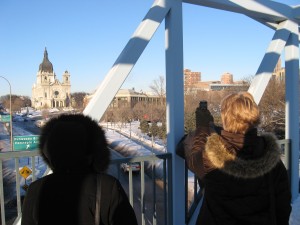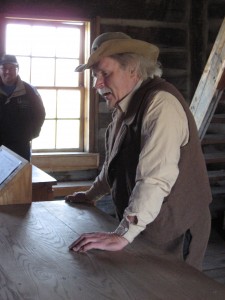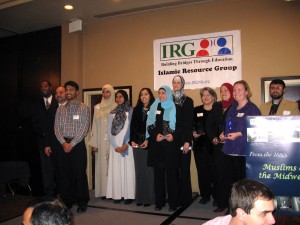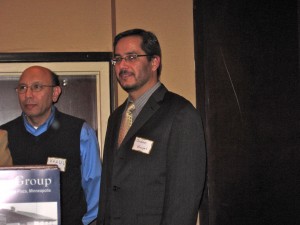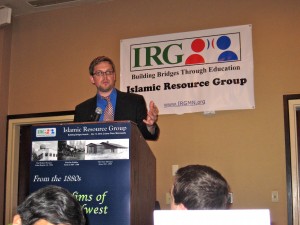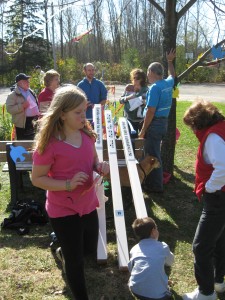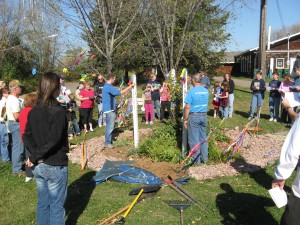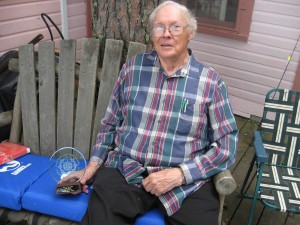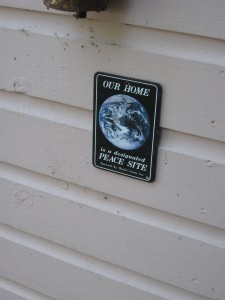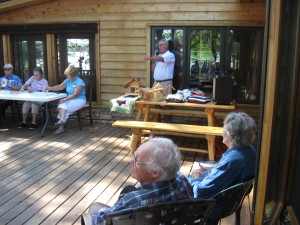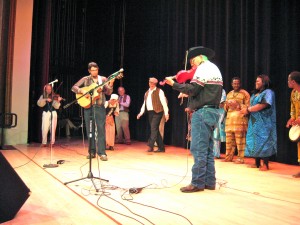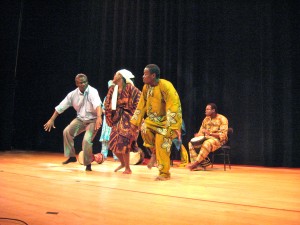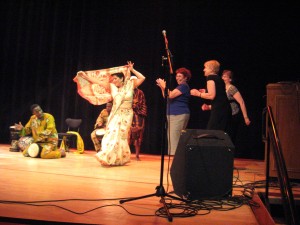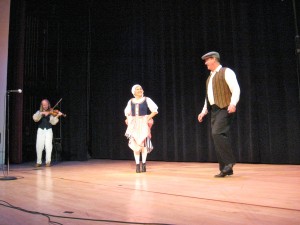#312 – "The first rough draft" post-Bells for Haiti, January 12, 2011
I always remember my first visit to the then-brand new Newseum in Arlington VA. It was sometime in the late 90s, and I happened to be at the right place at the right time to catch a shuttle to the new, and then free, Museum to print and visual media.
A prominent quote, there, was this (or words to this effect): “Journalism is the first rough draft of history“. It was a statement full of meaning: any breaking news is fraught with peril, possibly inaccurate, but still news nonetheless.
Wednesday of this week an ad hoc group saw the results of “Bells for Haiti”, a tribute to Haitians on the one year anniversary of the devastating earthquake January 12, 2010.
Following is my ‘first rough draft’ of the event, of which I was proud to be a part:
On Wednesday, Cathy and I chose to join a group of eight people on a downtown Minneapolis MN bridge to witness the Bells ringing at the Episcopal Cathedral of St. Mark (a block behind us in the photo) and at our own church, the Basilica of St. Mary (in the photo). (Click on photo to enlarge it.)
Adjacent to the Baslica on the left is a very busy and noisy freeway, then nearing rush hour, but when the immense primary bell began to ring, precisely at 3:53 p.m., I was overcome with not sadness, but elation.
It was about December 9, 2010, that Basilica had signed on as the first place to ring their bells in Bells for Haiti.
Our little project had actually come to pass.
A year earlier, January 10, 2010, in that same Basilica, Fr. Tom Hagan, long-time Priest in Cite Soleil, had given the homily at all Masses at Basilica. January 11, he was back in Port-au-Prince…little did he know….
Like all great things, Bells for Haiti started with an idea in conversation: in this case, Bells for Haiti began with two women in conversation at the American Refugee Committee (ARC) in Minneapolis (whose headquarters is two blocks behind and to the right of Sue, the lady with the camera).
For a month a small ad hoc committee, never exceeding 11 people, initially mostly “strangers” to the rest, came together in a conference room at ARC to make the idea happen. We elected to keep Bells for Haiti simple.
By January 12, as any of you know who visited Facebook, over 3,500 people from who-knows-where had enrolled in the remembrance via Facebook. (Our committee was largely Facebook-illiterate when this project began. No more.)
Bells were ringing all over the United States, and probably other places, all at the same time and for the same reason.
We will never know how many places, how many people, in how many ways, people remembered Haiti on Wednesday, January 12, 2011.
The project gives meaning to the famous quote of Margaret Mead: “Never doubt that a small group of thoughtful, committed citizens can change the world, indeed it is the only thing that ever has.”
Thank you. Extra special thanks to the Haitian Lawyers Leadership Network and the Minnesota Alliance of Peacemakers who co-sponsored the event.
Those who participated on the Bells for Haiti committee: Therese Gales, Jenna Myrland, Lisa Van Dyke, Lisa Rothstein, Bonnie Steele, Dale Snyder, Jacqueline Regis, Ruth Anne Olson, Sue Grundhoffer, Mike Haasl, Rebecca Cramer, Dick Bernard. Jane Peck also deserves much credit, though she could not participate directly. She initiated the idea for gathering groups together last spring to keep working for Haiti. At the moment, there are 25 groups loosely and informally affiliated in what is now known as Konbit [“cone beet”]- Haiti/MN.
For more background, click here.

